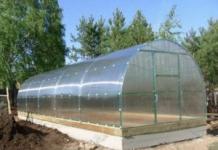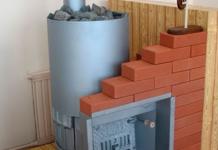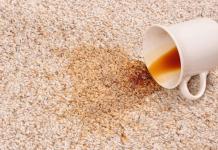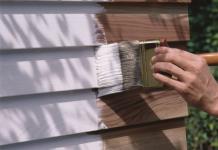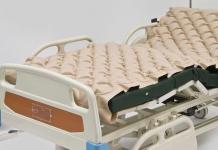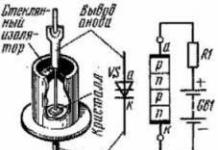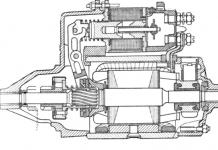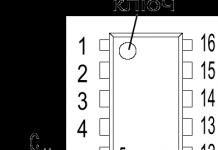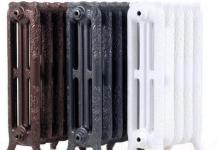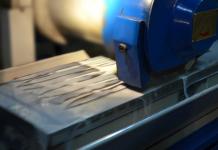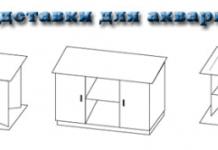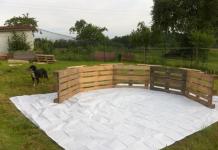A knife from a bearing is made in a rather painstaking way. If you can use the tempering method, metal machining and subsequent hardening to make a home-made one, then a knife from a bearing can only be obtained by forging.
The peculiarity of this process is that the bearing has a round cage, and for straightening it onto a metal strip, only one option is suitable - forge.
Forging a knife from a bearing

It is recommended to cut the bearing obliquely - when we forge, we can form the nose in an easier way.

The author used the Shx15 alloy - this is steel that is alloyed with chromium. Before starting forging, we anneal the alloy, leave it in a furnace or furnace to cool slowly - about 20-60 degrees per hour. After annealing, the steel acquires plasticity, now it is more convenient to forge it.

We straighten the clip, we form the blade. To determine the required temperature for forging steel Shx15 - and this is within 800 ... 1100 ° C, it is worth using a pyrometer. But if there is no such device, the heating level is determined by the color of heat - somewhere from cherry red to dark yellow.
When the forging process is completed, normalization is done, otherwise stresses will remain in the metal and, at best, the blade will lead during hardening, and at worst, it will burst in the cold, possibly with injury. To carry out normalization, we heat the blade to 800 ... 950 ° C, we do not maintain this temperature for long - and into the air, onto a flat surface, to cool down.

Then you can move on to metalwork. Draft descents are made by forging, the rest is done with the help of a grinder or a grinder. The main thing is that the thickness of the slopes must be at least 1 mm, otherwise the blade will lead during hardening.

Now - probably the key point in the manufacture of the knife. This is heat treatment.
For hardening, slowly heat the blade to 830 ° C - light red. To determine the required temperature, you can use a magnet - if the metal is no longer magnetized, then the lower hardening temperature has been reached. After an exposure of 1 minute for each mm of blade thickness is observed at this temperature, we cool it in oil. In this case, the oil must be heated to approximately 50°C.
Of no less importance is the process of tempering the metal - it can be done in the oven, t200 ° C, the duration is one and a half hours. The main thing here is that the wife does not see this =)

The result is a moderately hard blade, the needle file can barely be hooked, and springs under load.

Next, let's move on to the handle. As a handle material, the author took a birch suvel boiled in salt water with coniferous sawdust.



It's no secret that the bearings use durable, wear-resistant steel, thanks to which the bearing lasts a long time. These wonderful qualities of steel bearings make it possible to produce high-quality, strong knives from them. Today we will figure out how this is done.
I note right away that the process of making a knife from a bearing requires a forge. The fact is that in order to obtain a workpiece, the steel will have to be leveled, and for this it will need to be heated red-hot and worked with a hammer. As for other tools, their availability will depend on how well you make a knife and how quickly. For example, you can quickly and efficiently grind the blade with the help of this machine is indispensable in the manufacture of knives.
Materials and tools used
List of materials:
- bearing cage;
- wood for overlays;
- brass rods or other material for pins;
- epoxy adhesive;
- wood impregnation oil.

List of tools:
- Bulgarian;
- vice;
- bake;
- household oven;
- drilling machine;
- sandpaper;
- polishing machine;
- hammer and anvil;
- belt sander ();
- "dremel";
- clamps;
- electric jigsaw;
- pickling kit (optional);
- electrical tape, paper, marker and other little things.
Knife making process:
Step one. We extract the workpiece
First of all, you will need to disassemble the bearing, from which the author used a clip (outer part). Bearings are different, as are the ways to disassemble them. We clamp the clip in a vise and cut it with a grinder.


Now you will need a furnace, the steel needs to be heated to red. We take it out and while hot we level it with a hammer on the anvil. In principle, after annealing, it should be machinable even in a cold state. But it is easier to level the metal if it is hot.




The workpiece is almost ready, it remains to grind it. This is where a belt sander comes in handy. After processing, you will get an excellent workpiece, which is not much different from the purchased metal, or maybe even better.



Step two. Cut out the template
To make a knife, you have to come up with a template in advance, or you can download a ready-made one from the Internet and print it on paper. Next, cut out the template from paper with scissors and glue it to the workpiece. If you need the template in the future, you can simply circle it with a marker.





Let's start cutting the blade. The author does not have a band saw, he does it with the help of an ordinary grinder. We clamp the workpiece in a vise and slowly begin to cut. As for problem areas where you need to cut along a curve, we make a lot of cuts there, and then cut them out piece by piece. At the end, we put a grinding wheel on the grinder and grind the profile in a circle to remove rough pieces, notches, and so on.
Step three. Grinding
The rough molding of the blade is over, we proceed to finer processing. We go to and finalize the profile of the blade. As for hard-to-reach places where the machine belt cannot reach, we take a dremel with the appropriate nozzle.


Step four. Blade finishing
At this stage, the author completes all work with metal, not taking into account the sharpening and polishing of the blade. Hardening is ahead, and after it the metal will be too strong for processing.

We go to the drilling machine and drill holes for the pins. You can also drill a number of non-through holes so that the pads adhere well to the metal.



The author makes teeth on the blade, it is convenient to rest on them with the thumb when cutting hard materials. You can form such teeth with a dremel or ordinary files.



And finally, there will be another such important point as the manufacture of bevels. You can do it manually, but it will take a lot of time and effort. The easiest way to do this, and qualitatively, on a belt grinder. Bevels should be as symmetrical as possible.
Finally, sand the entire surface of the blade, you need to remove all rough scratches after grinding. We take fine sandpaper and proceed to fine grinding. Paper can be wetted in water, so it grinds better.
Step five. hardening
By tempering the metal, we make it hard, this allows the blade to keep its sharpness for a long time. The hardening process must always consist of at least two steps. The very first stage is hardening, we heat the blade to a yellow glow, while the metal should not be attracted by a magnet. Although there is one point, for each steel, the tempering temperature and the color of heating are individual.



Now we cool the blade in oil, vegetable or mineral will do. Be careful, as oil ignites when immersed in hot metal. As you can see in the photo, the auto heats up only the blade itself for hardening, and the tail part, where the handle is located, remains dark.

The second stage of hardening is the tempering of the metal, it must be heated to a certain temperature and allowed to cool smoothly. This is done so that the metal is not brittle, as it is after hardening. For these purposes, a household oven is usually used. The heating temperature for tempering for different metals is also individual. On average, steel is heated for about an hour at a temperature of 200-250 degrees Celsius, and then allowed to cool smoothly with the oven. The higher the heating temperature, the stronger the tempering of the metal.
Step six. Cleaning and pickling
After hardening, the metal will be dark, it may have scale and traces of burnt oil. To remove all this, we take fine sandpaper and grind the surface. To improve efficiency, you can use WD-40 or plain water.




Now you can start etching the drawing or inscription, as in this case. We glue the stencil, seal the area around with electrical tape and apply the reagent at the right time. Wash steel well in water.



At the end, the author polishes the metal to a mirror finish. You will need a polishing wheel and GOI paste, or similar.
Step seven. overlays
For further work, seal the blade with electrical tape. This will protect it from getting epoxy glue and also reduce the risk of cuts. Let's get started on making the handles. We draw the outline of the handle on a wooden block and cut it out. Then we cut the workpiece lengthwise and as a result we get two absolutely identical halves.

We drill holes in the overlays and dilute the epoxy glue. We assemble the handle on the pins using glue. Firmly clamp the handle in a vise or clamps until the glue dries completely.
Russian knife craftsmen never look for easy ways. Because it is a hobby and passion for many. It happens that from a simple occupation, a real small business turns out. But for the most part, for people it's still a rest and distraction from everyday life. Each person determines his own leisure. Fans of forging quite often make their products from unusual things, for example: a knife from a bearing. A very interesting and challenging process.
Homemade knife from a bearing.
Pros and cons of a knife from a bearing
Many inhabitants will say that why do this when you can go to the store and buy yourself a couple of wonderful blades. But we do not tell them how to spend their time. So if you are not interested, go to another resource, and here there will be an article containing a lot of useful information, especially for beginners. Because the presentation is planned in a step-by-step perspective.
We have already written that there is no “perfect knife” for all occasions. And this is true, but you must always strive for the ideal. Therefore, let's try to highlight the positive and negative sides of the blade from the bearing. To know what will happen as a result of proper metal processing.
Bearing steel is originally designed for high loads, for this reason it is ductile and uniform when heated. And as a result, a product with a rigidity of 61 to 64 units on the Rockwell scale is obtained. And most importantly - the highest wear resistance of the blade. The only negative can be called fragility during processing. It is very important to perform hardening correctly, and generally exclude forging “cold”.
How to make a knife from a bearing with your own hands
It is clear that in this case, forging is indispensable. It is necessary to straighten the clip of the product. Connoisseurs of such things are divided into two camps, which part is better to choose for work: internal or external. There is no definite answer, but many argue that the inner ring is made of the best steel. Reinforcing his words with the fact that this part bears a heavy load.
But, be that as it may, the beginner definitely does not care. First you need to at least something turned out and did not crack during hardening. For normal operation, you will need your own, specific set of tools. And, most importantly, the forge.
Required materials and tools
A completely “green” beginner is unlikely to have the necessary tools, so they need to acquire them. Some you can make yourself, and others you can only buy. But again, it is permissible to replace a purchased tool with a similar simpler one, but the manufacturing time will increase. If there are no plans to engage in blacksmithing and knife business, buying something, of course, is pointless, if only little things. The following materials will be required:
- bearing, preferably disassembled;
- wooden block, for the manufacture of the handle;
- rods for rivets, preferably from brass;
- epoxy glue or similar substitute;
- oil or wax to impregnate the handle;
- masking tape, piece of paper, pencil, marker.

Bearing kitchen knife.
With materials it is not very difficult and everything is available. But with regards to the tool, pay attention, as mentioned above, if there is no professional one, try to replace it with more affordable options. We will also indicate them for clarity:
- metal vice, clamps, clamps;
- angle grinder (grinder) with a set of various disks;
- a forge or a muffle furnace, which you can make yourself;
- drilling machine or drill with a set of drills;
- sandpaper of different grain sizes;
- polishing machine, you can angle grinder with a polishing wheel;
- gas stove oven, for metal tempering;
- an anvil and two hammers of different weights, one - 6 kg, the second - 1.5-2 kg;
- belt grinder or angle grinder again with an abrasive wheel;
- jigsaw or just a hacksaw with small teeth;
- welding machine;
- etching kit or engraver (this is optional).
Most of these items can be replaced with analogues. As for the muffle furnace and the hearth, these tricky designs can be made by hand (read the article “Hardening a knife at home”).
Part preparation for forging and bearing processing
Acceptable for the manufacture of a knife from a bearing, any specimens from working machines and engines. If you got it in an assembled state, the best way to get a blank out of it is to cut it with a grinder. To do this, we clamp the product in a vise and, using an angle grinder, make an incision at an angle.
This is done for one simple purpose, in the future it will be easier to forge the point and nose of the blade. Then, with the help of locksmith tools, it is required to unbend as far as the upper clip will turn out. Attention! In no case should you knock with a hammer, otherwise you will ruin the part before you start working with it. Remove all unnecessary parts and you can proceed to the next step.
For full-fledged work, especially for beginners, it is necessary to make a sketch on paper of the future blade. Take into account the thickness of the workpiece and its length, or rather, what should be the result. The drawing must contain all the information on dimensions, including the handle. For blades made of such material, it is better to use the overhead method of mounting the handle from two halves of wood, fixed with rivets. The drawing will simplify the task many times over.
Annealing and forging of the bearing race
In the upper race of the bearing, ShKh15 steel is most often used, but for accurate specifications, you can use reference books. Metal marking is sometimes present on the products themselves. Accordingly, each steel grade behaves differently during forging and hardening. In our experiment, a copy was exactly the one indicated above.

Knife bearing.
Such steel must be subjected to mandatory annealing, the process occurs in this way. In accordance with the reference book, the letters "ШХ" denote - bearing steel with chromium alloying. It is annealed at a temperature of 800 ° C, with a decrease in it at a rate of 10-20 degrees / hour. All this information is freely available on the Internet, be sure to use it.
Many people new to forging will find it difficult to work with blacksmith tongs. To simplify this task, a bar is welded to the workpiece. The item is placed in an oven and heated to 900-1100 ° C, it will look dark yellow. But it is better to use a laser thermometer. If it is not there, we try the steel with a magnet, the workpiece is not magnetized, which means that the heating has reached a certain Curie point.
When this value is reached, you can gradually start forging. To begin with, with a small hammer, carefully straighten the part. Always control the temperature, it is better to play it safe and heat it up than just destroy it when it is cold. Next comes the big hammer. Forging must be carried out according to all the rules:
- with gentle hammer blows, from the middle of the part we “drive” the metal to the side, thus forming descents;
- work on the point is slightly different from the general principle, the nose of the blade is carefully adjusted to the point;
- obligatory drawing of the workpiece along the length for the shank;
- having done everything correctly, the butt will be no more than 2 mm.
Suddenly you don’t want to forge at all, just straighten the part, and the rest can be grinded off on a grinder. But keep in mind, the loss in the width and length of the blade, and the forging process itself gives the metal additional rigidity.
At the end of the forging process, it is imperative to carry out the "normalization" of steel. We heat the workpiece to 900 ° C, take it out of the oven and leave it to cool in air.
Roughing and grinding work with the workpiece
Everything that was done in the forging process can be called "rough" work. Now we have to bring the part into the appropriate form. Cut off the rod with the angle grinder. On a grinder, or a belt machine, without pressing hard, you need to carefully remove all carbon deposits from the metal.
Thus, all irregularities will go away and the surface will become shiny. Do not get carried away with this process, so as not to remove excess from the workpiece. Although after this procedure, in your hands you will already have almost a blade.
Transferring contours from the template to the blade
It came to the sketch, which we performed at the very beginning. It may happen that the drawing does not coincide with reality. There is no point in being sad, because this is a draft version. It must be cut out and applied to the blade, but it makes sense, even glued temporarily with any paper glue.

Drawing of a knife for manufacturing from a bearing.
Now the part can be fixed in a vise, and with the help of a “grinder”, with an abrasive wheel, we bring the blade to the look you need, along the way, cutting off all the scuffs and bumps. The only negative may be that the metal will heat up and the paper will burn. Therefore, before gluing it, it is necessary to scratch all the contours from the sketch. The task is not easy, but it is simply necessary.
During the cutting of the image of the blade, overheating of the part, even small areas, should not be allowed. Pour the workpiece with water. Upon completion of the work, you can proceed to the next stage.
Sharpening and grinding
At the very beginning of the manufacture of a knife, you should have thought: for what purposes it is created. Since sharpening for each type of product is completely different. But first of all, you need to remove the descents.
We will not focus on them, but remember: the main thing in descents is symmetry. Only after their removal, you can start sharpening the blade, but first grinding. It can be done on a grinder or using an angle grinder with a special circle. Then two or three non-through holes are drilled in the shank for attaching the handle. During hardening, trouble can happen if the holes are drilled completely.
Hardening and tempering of the blade
A very important point, especially for beginners. According to the reference book, the steel hardening temperature is 830 °C. Preheat the oven, a thermometer will help to a predetermined mark. If it is not available, please use one of the following methods:
- the simplest and most common, check with a magnet, as soon as the blade does not “stick” to it - the goal is achieved;
- the next one is very interesting, sprinkle the part with salt, its melting point is 800 ° C, which means there is still a little left;
- and a way for "hardened" professionals - the color of the workpiece becomes light red.
All methods are effective, but there is nothing more accurate than a thermometer. And in this case, accuracy is very important. Heating to the desired point, the blade is removed and lowered into oil with a holding time of 1 minute per 1 mm of the thickness of the product. Almost any oil can be used: vegetable, mineral, waste machine or transformer oil.

Knife blade hardening.
It must first be heated to 50 ° C, this is necessary for a good enveloping of the immersed product. When performing such work, be careful, put on goggles and gloves, there is a possibility of oil splashing. There is no need to move the blade while it is in the dive.
After cooling the workpiece, the moment came for tempering the steel. The procedure will relieve the stress in the structure of the crystal lattice of the metal that has arisen during forging and hardening. In the reference book, the temperature is 150 ° C and the time is 1.5 hours. After heating the oven of the kitchen gas stove, we place the wedge there for the right time.
Blade cleaning
After all the manipulations, rough cleaning on the grinder, thin, small scratches will remain on the blade. They must be removed manually using sandpaper. It is necessary to process starting from grain 400 perpendicular to the scratches.
Then we move on to the 600th grain and finish with the 800th. To achieve a mirror shine, you can use GOI paste or special grinding mixtures.
Preparing the lining and assembling the knife
There is a fairly wide choice of materials for the manufacture of the handle: various metals, plastics, leather, twine winding and other options. But many craftsmen like to work with wood, it often emphasizes the uniqueness of the blade and its beauty.

Preparing the blades for the knife.
The principle of the overhead handle is quite simple, and more reliable than other attachment methods. After tempering the metal, you can drill holes in the shank completely. And also prepare a bar:
- Try on the shank, mark and shape it close to its size.
- Holding the part in a vise, cut along, strictly in half;
- To eliminate gaps, the inner parts of the halves are sanded with sandpaper.
- Marking is made in accordance with the holes on the shank, and drilled into the tree.
- The next step, you can do it differently, the easiest way is to rivet the handle with rivets.
- On a grinder or grinder, finish the handle to the desired shape along with the shank.
- In conclusion, the wood is treated with fine-grained sandpaper and impregnated with special oil solutions or varnished. Depends on the type of wood.
To bring the case to the final version, you can also make a scabbard. But this is another and rather extensive topic. The whole process described, for a beginner, may seem very complicated. But people who do this all the time make such knives, as if on an assembly line. So do not get upset with random errors, keep working, trying. And the result will not be long in coming. Good luck in your endeavors!
Now on sale there is a fairly large assortment of various knives of good quality. However, hand-forged knives are very popular. Such products have a special energy. Do-it-yourself knives can be made in different ways. The most difficult way is the manual forging option. It should be understood that forging makes it possible to make a durable blade of excellent quality, which can last a fairly large amount of time without losing its qualities.
A knife forged from durable material can last for many years without breaking or losing its qualities.
In order to forge a knife, you will need to have some knowledge about metals and their properties. In addition, you need to thoroughly master the tool for forging. For people who decide to make this product with their own hands for the first time, it is important to familiarize yourself with some recommendations.
How to choose the right material for making a knife?

Figure 1. The design of a forged knife.
To make a quality blade, you need to choose the right steel for it. The cutting characteristics of the knife and its strength will depend on the choice of material. For the correct selection of metal, it is important to know what properties such a material has. You will need to focus on 5 main properties of steel:
- Wear resistance - the resistance of steel to wear during use. This property will depend on the hardness of the material.
- Hardness is a property of a material that indicates its ability to resist the ingress of hard materials into it. It is worth knowing that a solid material is less subject to deformation. The strength index can be measured on the Rockwell scale.
- Strength - the ability to maintain integrity when exposed to atmospheric forces.
- Plasticity is the ability of a material to absorb and distribute kinetic energy upon impact and deformation.
- Red hardness is the resistance of a metal to high temperatures and the ability to retain its properties during heating. The minimum temperature for forging steel will depend on the resistance of the material to heat treatment. It is recommended to choose hard grades, for which the working temperature of forging is more than 900°C. It is worth knowing that the melting point of this material is approximately 1500°C.
All these characteristics are interconnected. The predominance of one of them leads to the deterioration of the others. Each property of the material will depend on the content of alloying elements and additives in it, which include silicon, tungsten, molybdenum and others.

Figure 2. Types of knife profiles.
The presence of all alloying elements and their use in the required proportion in the process of steel production, as well as knowledge of their properties, makes it possible to create steel for the required purposes. Each of these steels has its own marking. It is worth noting that Russian and European brands have different designations.
Russian manufacturers, which are often used in the process of forging blades with their own hands, include steel marked U7-U16, R6M5, Kh12MF and others. Of the European grades, steel 1095, M-2, A-2 and others can be noted.
A detailed description of the metal grade can be found in the Steel and Alloy Grade Book.
Back to index
What tools are needed for forging a knife with your own hands?
To forge a blade, you will need to have a special blacksmith tool, but you can also use amateur tools:
- Hammer 4 kg.
- Hammer up to 1 kg.
- Vice.
- Point machine.
- Stove.
- Anvil.
- Apparatus for welding.
- Bulgarian.
- Blacksmith's tongs or ordinary pliers.
- Wrench.

Forging tools: hammer, vice, adjustable wrench, blacksmith's tongs, chisel, tamp.
You should know some of the nuances regarding the stove. It will be necessary to reach a temperature of approximately 1000-1200 ° C, which cannot be done in an ordinary oven. In this regard, it will be necessary to improve the stove. The structure is made of metal with thick walls, after which a pipe is connected into which air will be supplied from the vacuum cleaner. Coal is suitable as fuel.
Before making a knife, you will need to make a sketch. A knife is a simple object that consists of a blade and a handle, but these elements have many components. On fig. 1 you can see a sketch of the structure with all its components. The existing types of profiles can be seen in Fig. 2. After a suitable profile has been selected, it will be possible to proceed to the creation of a sketch. Professionals do not always use drawings, but beginners will need them.
Back to index
How to make forged knives from a file or cable?
The file is made of wear-resistant steel, and therefore knives are often made from this tool. Such blades will have a good cutting edge.

A knife forged from a cable is inferior in its characteristics to others, but the blade has an unusually beautiful pattern, reminiscent of Damascus steel.
The first step will be to clean the tool from notches and rust. This action can be done using a grinder. If necessary, it will be necessary to cut the workpiece of the desired length from the file. After that, the product is welded to the reinforcing bar and thrust into the stove. The product must be heated to the required temperature, after which it will be possible to start rolling the product to the desired thickness. Next, a point and an edge for cutting are made. The shank of the knife from this tool is recommended to be made under the overhead handle.
The cable must be split to red, then removed from the stove and sprinkled with borax. After that, the cable must be heated to 1000 ° C, removed from the furnace again and begin to forge. The blows are applied with a hammer, it is important to try to keep all the fibers together.
The end result can be a strip of steel, which consists of several layers. It will be possible to forge a knife of the required shape from it.
Back to index
We forge a knife from a drill ourselves
Drills are often used for forging knives. This is due to the fact that these products are made of R6M5 steel, which is suitable for blades. It has a good level of strength and is easy to sharpen.
You should be aware that large drills consist of a working part made of R6M5 steel and a shank made of ordinary steel. Drills of small sizes in most cases are made of P6M5.

The file knife has excellent cutting properties.
If you plan to forge a knife from a large drill, you need to immediately determine where each type of steel is located. To do this, you need to grind the drill along the length. In places where ordinary steel is present, a large number of sparks will form. At the point of a drill made of alloy steel, there will be few sparks. This procedure will need to be performed in order to determine where the knife will have a blade and where the shank.
Forging is performed as follows:
First of all, a fire is made in the stove, after which the blower is connected. Next, you need to wait until the fuel starts to burn strongly. After that, the drill is placed in the furnace. This must be done with tongs so that the shank is located outside the fire. If forging is performed for the first time, it is quite difficult to determine from the first time whether the metal has heated up to the desired temperature. In this regard, more than one drill will be damaged. In order not to spoil a large amount of material, it is recommended that you first practice with heating and forging on reinforcing bars.
You will need to remember what color the metal had and when it was easy to forge. It should also be taken into account that in sunlight, even a metal heated to 1000 ° C will not be light.
After the drill is heated to a temperature of more than 1000 ° C, it will need to be removed from the oven, and then the lower part of the shank should be fixed in a vise. After that, you will need to take an adjustable wrench, press the top of the drill with it and straighten the spiral using circular motions. All actions will need to be done quickly so that the metal does not have time to cool, otherwise the drill will break. If all the steps in one approach did not work out, you will need to reheat the drill and repeat the process. The end result is a relatively flat strip of metal.
At the next stage, it will be necessary to forge the drill and roll the metal to the desired thickness. To do this, you need to heat the metal to the desired temperature, take a heavy hammer, and then level the steel with strong blows, giving the necessary shape. The end result will be a steel strip with a thickness of approximately 3-5 mm. In the process of forging the material, it will be necessary to constantly monitor the color of the product. As soon as a dull color appears, the workpiece will need to be returned to the forge.
Next, you need to forge the tip of the knife. It is worth knowing that the product will need to be given a round shape, while maintaining the desired thickness of the structure. Forging should be done in such a way that in the process of making a hole, the blade is slightly pulled along the length. You have to hit carefully.
The next step is forging the cutting edge. To do this, use a light hammer. The metal moves down to the edge, and you need to start from the middle of the blade. The cutting edge should be thin, and the blade should remain straight. All strikes must be applied carefully. It is important to monitor the color of the product.
Next, the shank is forged. First of all, the shank of the round drill is heated, after which the product is rolled out with strong hammer blows. The shank can be narrow or wide. Everything will depend on the sketch.
After the metal has cooled, it will be possible to grind. You will need to remove excess metal to make the knife even and give it a shine. After grinding, the product can become 2 mm thinner, as a result of which the knife will have less weight. At this stage, sharpening and hardening of the blade can be performed.


